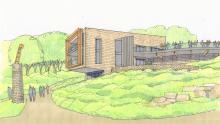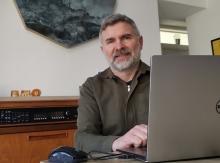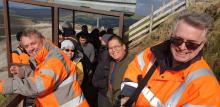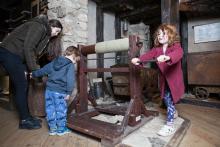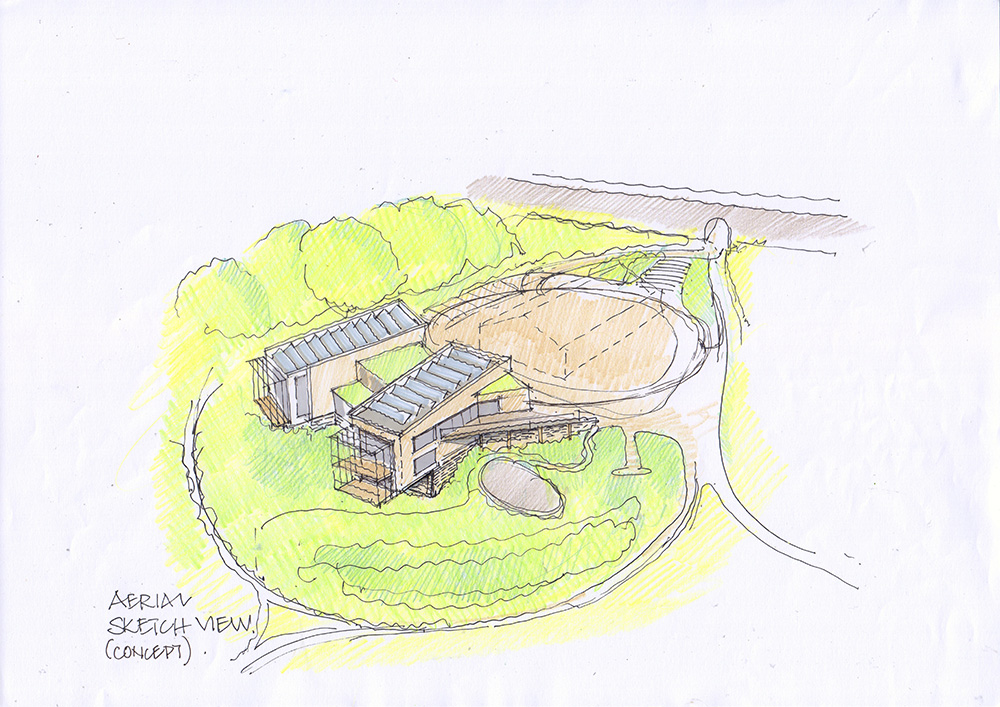
The Institute of Quarrying (IQ) is moving its headquarters to the National Stone Centre (NSC) in Wirksworth, near Matlock, Derbyshire, over the next few months as part of an ambitious merger aimed at future-proofing mutual long-term goals. Guy Woodford visited the NSC to speak to some of the merger’s key figures about the vision for the industrial heritage-rich site.
The architect renderings of how a revamped NSC and new home for the IQ may look are striking, befitting a minerals extraction industry that builds Britain, producing 400 million tonnes of resources and products for UK construction and manufacturing each year.
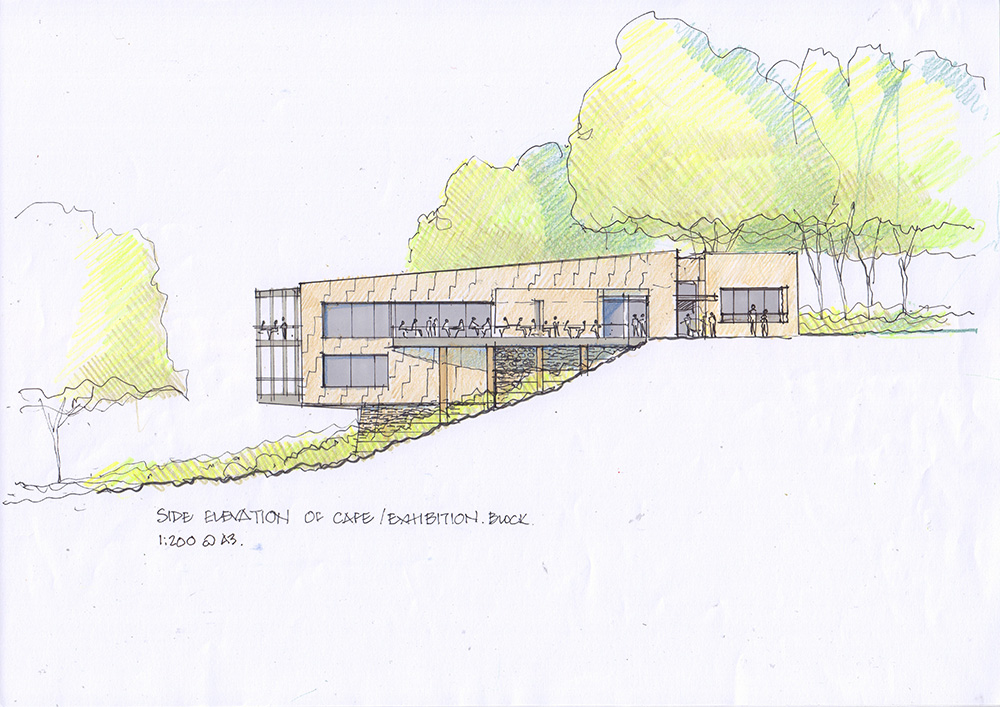
Aggregates Business has been given exclusive access to architect Babenko Associates’ (Babenko) vision for the NSC-IQ project. The renderings, the result of Wirksworth-based Babenko’s close consultation with NSC trustees and IQ management, are an eye-catching initial step in an industry, local authority and public consultation process ahead of a detailed NSC-IQ planning application to Derbyshire Dales District Council early next year. The application will bid to turn the NSC’s 42-acre site into a state-of-the-art visitor attraction, where cutting-edge technology immerses visitors in the UK stone industry’s fascinating story.
Currently run by a small group of volunteers and set within six former limestone quarries in the heart of the Derbyshire Dales, on the edge of the Peak District National Park, and close to the Derwent Valley Mills World Heritage Site, the NSC encourages people to engage with the origin, industry and history of stone. The site, created in 1990 after funding was secured via the Landfill Tax, is open to the public free of charge every day except Christmas. It currently offers outdoor fossil trails, a visitor centre with a shop, a café and the Building Britain exhibition, geological walks, picnic areas, and a children’s play area.
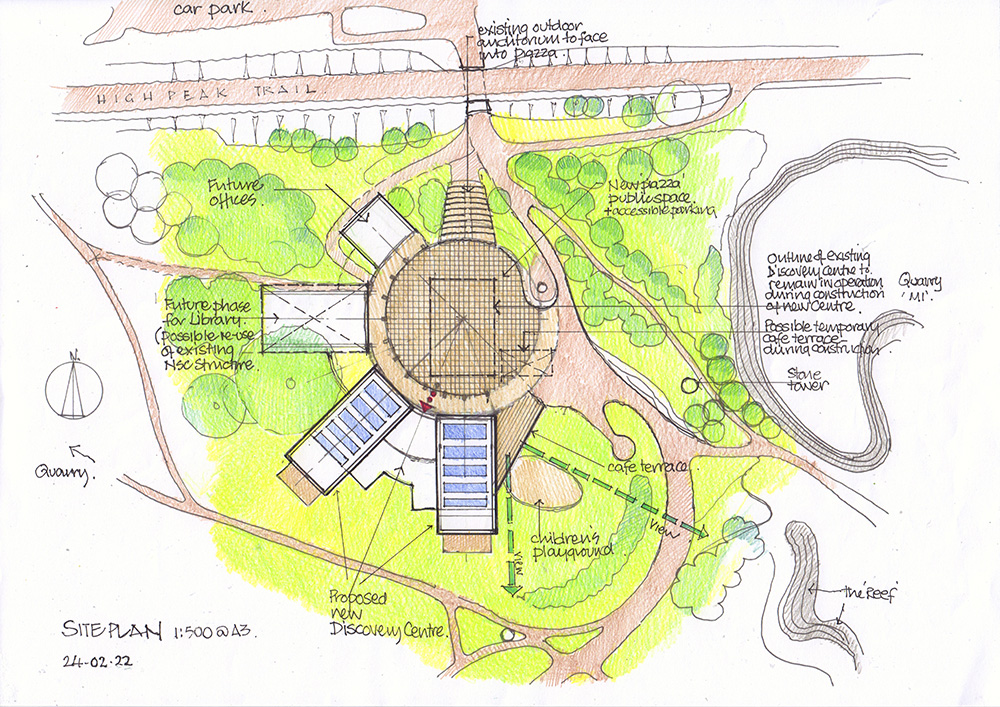
A Site of Special Scientific Interest (SSSI) for its geological formations, the NSC also runs a very popular introductory course on dry stone walling and a stone carving course led by Mark Eaton, a highly experienced stonemason and master craftsman.
Viv Russell, the IQ’s chairman and former managing director of Derbyshire-based Longcliffe Quarries, says an initial up to £600,000 IQ investment will increase the NSC’s exhibition space and allow the Institute to relocate over the next few months from its current offices in Chilwell, Nottinghamshire. Crucially, Russell says the new base will also enable the IQ to increase its support to members and play an enhanced role in communicating the quarrying industry’s immense value to a wider audience.
“The National Stone Centre is in a superb location. There’s already a café here and a certain number of resources, but one of the things we’ve recognised at the IQ is that for many years we’ve tended as an industry to hide away and not broadcast the great things that we do. This makes the merger with the National Stone Centre a great opportunity. We are two charities with very similar values, and we will create a new base where the industry meets the general public.
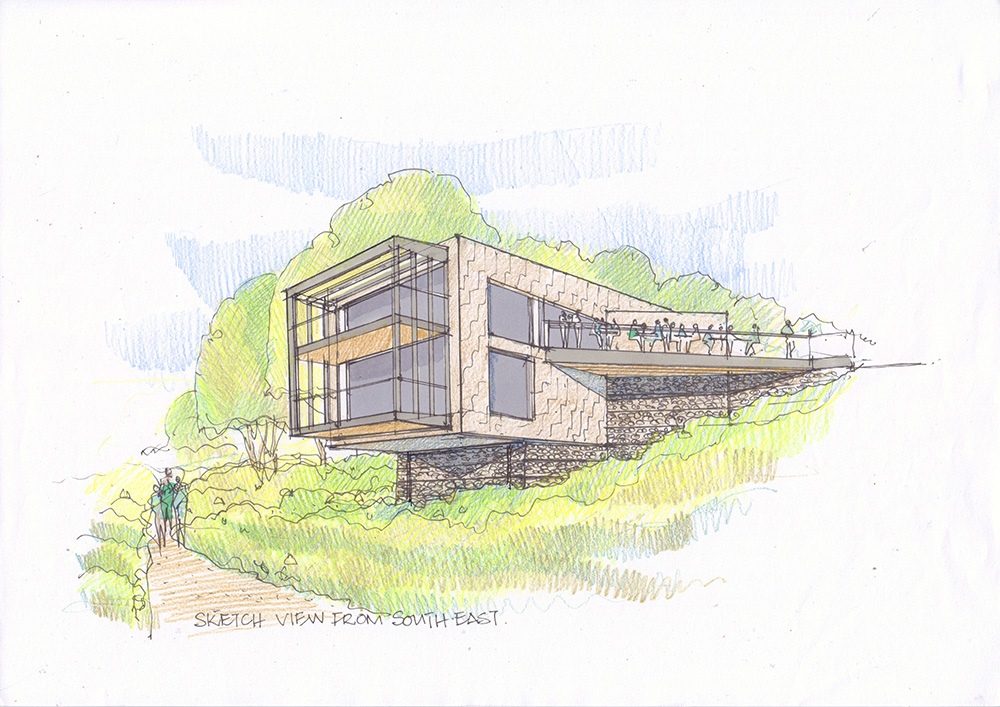
“We aim to create a new state-of-the-art NSC visitor centre which will be visitor economy-focused from May to September, and then skills and education-focused from October to April. The skills and education focus will allow us to engage more closely with the public and show them the great career opportunities in our industry.
“The new build we are proposing will use modern low carbon facilities and provide fantastic communal facilities in an area that is the heartland for the UK quarrying industry. Part of our plan is also to run public visits from here to various quarrying sites. This will allow us as an industry to dispel a lot of the myths about it that have been created due to lack of knowledge.”
Russell says the revamped NSC will embody the “past, present and future” of the quarrying industry. “We want to make the new build here the home of the industry’s archive. A lot of fantastic archive material has been lost during company takeovers and when people retire. But we’ve received some wonderful donated material from companies, such as Tarmac at Tunstead Quarry, who have donated over 26,000 digital images going back over 120 years. This allows us to make and refresh exhibitions.
“Overall, though, we want to inspire a visiting six-year-old as much as their grandad, who will enjoy spending time in an exhibition looking at pictures of the industry’s past.”
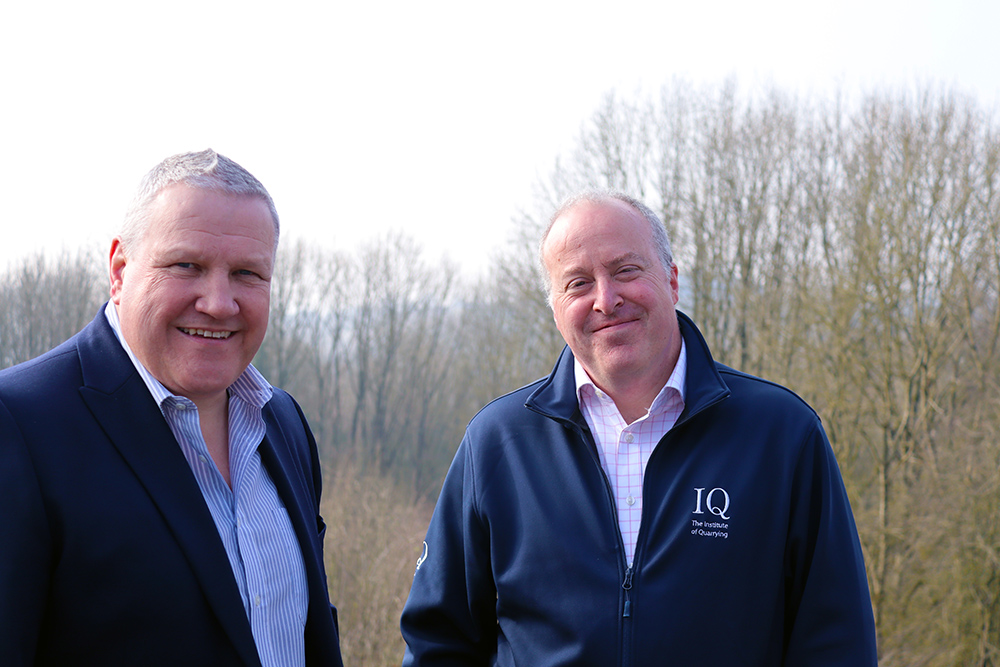
The IQ, whose team has begun moving into the Institute’s new NSC home, is currently exploring seminar opportunities and looking to expand its member education programmes. “We’ve got a biodiversity course at the NSC in June, and course attendees will be able to walk just a quarter of a mile down the road to see a restored quarry site,” highlights Russell.
Giving his perspective on what a revitalised NSC can offer, IQ chief executive James Thorne adds: “We want to create an industry centre of excellence. It isn’t just about one element. We want people to come here and get an idea of how the industry operates and where it is going, including on decarbonisation, sustainability, and use of technology. That creates awareness, and then we can tackle the long-term issue of getting more people into the industry. While core aspects of geology and mineral processing might be the same, the skill sets of quarry managers and equipment operators might need to be different in 15 to 20 years.
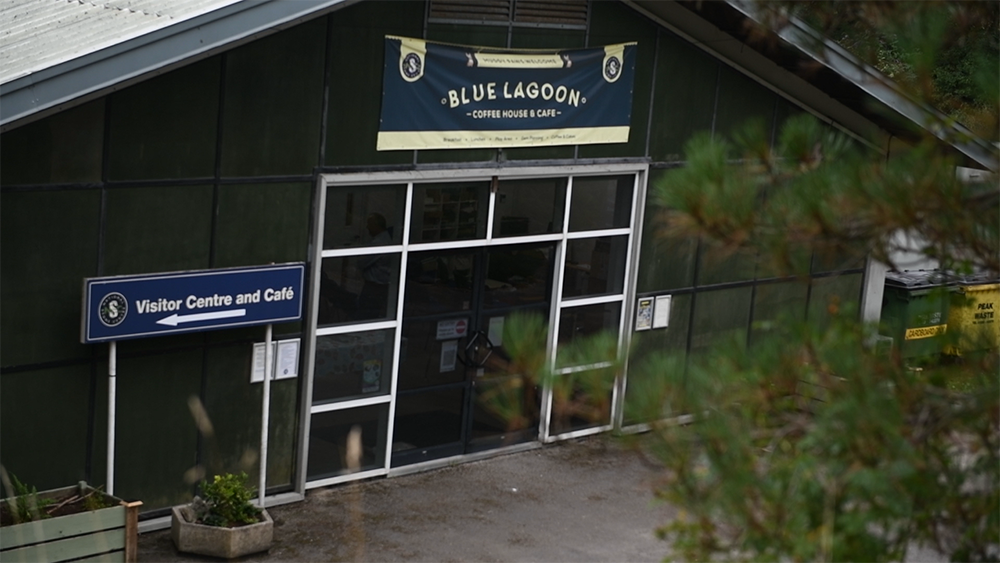
“In the short term, we will be bringing a temporary set of offices here next to the main National Stone Centre building. This will create a statement that we are doing new things here, while in the background, we’ll be engaging with industry figures and the public to get their ideas on what they want from a modern National Stone Centre and how they want the building to look. We have some great initial concept drawings. We need to build on that over the next three to four years and create a collaborative approach to this project.”
Thorne says moving the IQ to the NSC will better connect members “physically and digitally” to IQ services and education programmes. “It creates a focal point where IQ branches can come and visit and host events, giving us the space to run seminars and conferences. We can reach out from here and be in touch with the industry, which is, in some cases, just minutes away.
“Basing the IQ here will allow us to better convey to our members the industry challenges they need to face, helping them do their job better while also encouraging people coming into the industry and developing their skills and competencies.”
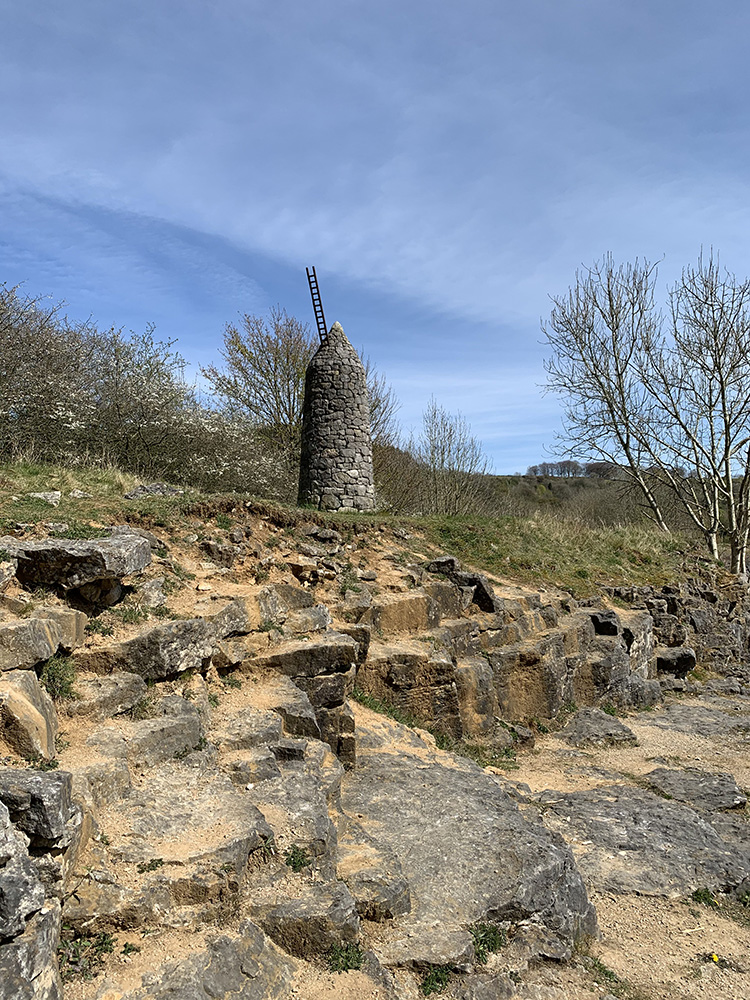
Russell says that because the IQ-NSC merger comes with a strong visitor economy development focus, there are many potential funding streams to help deliver the long-term plan of a revamped NSC. “There’s the Government’s Levelling Up agenda, the National Lottery Heritage Fund, private businesses, and industry stakeholders we can look to engage. For instance, it is a fantastic opportunity for the industry to highlight its low carbon products.
“We’ve already got local exhibitions booked for this summer at the NSC. One of them is a joint venture with the Natural History Museum.”
Giving an example of how new investment could lead to new job creation at the NSC and within the IQ, Thorne says: “We have said to the NSC that a key part of this project is expanding its activities. School visits, for instance, are largely volunteer-led. If you are going to increase their scale, given such visits are a key part of showing why stones and other minerals matter, you are looking at recruiting paid employees. If we are delivering more courses and industry events, we will have more people coming in to support that.
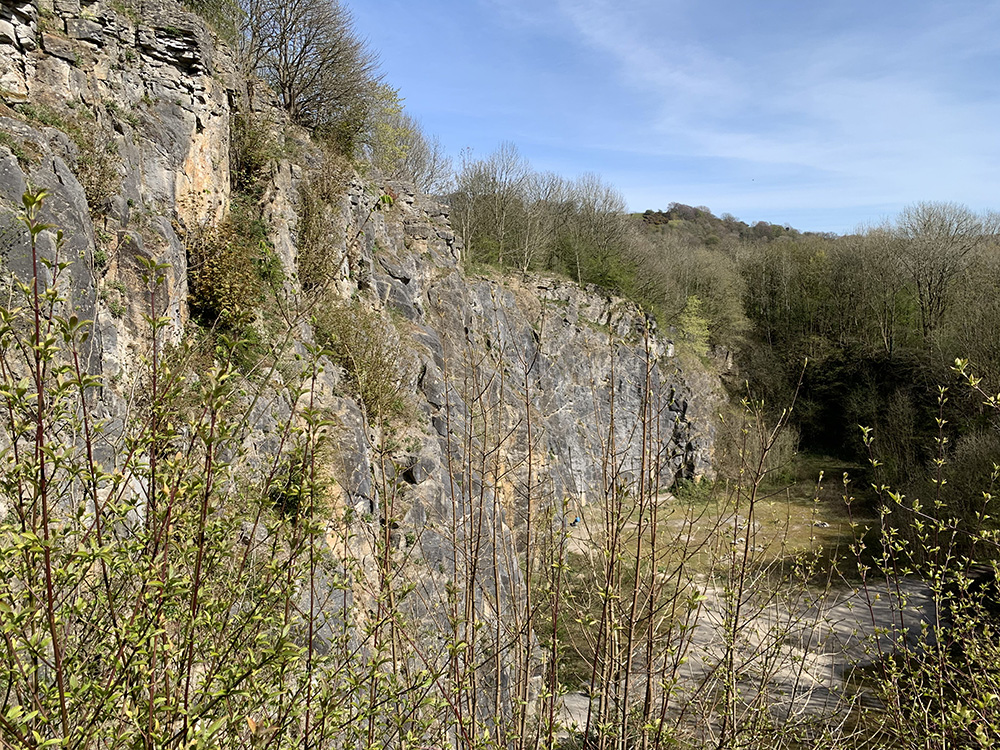
“Part of creating an industry centre of excellence will also hopefully lead to industry secondments, where someone with expertise in an area, like innovation, can come in for six months or a year to build up what we can offer at the NSC.”
Russell cites the Peak District-based Mount Cook Adventure Centre and the Derbyshire Eco Centre, a Derbyshire County Council-funded sustainability learning hub within the grounds of the NSC site, as other potential collaboration partners.
“If you look at what younger people joining our industry are demanding, it’s variety. You could potentially second someone out for six months as an industry career ambassador. Once young people realise the fantastic diversity of jobs within our industry, they are keen to try them. We are talking about a minerals production industry that offers skilled and well-paid work.”
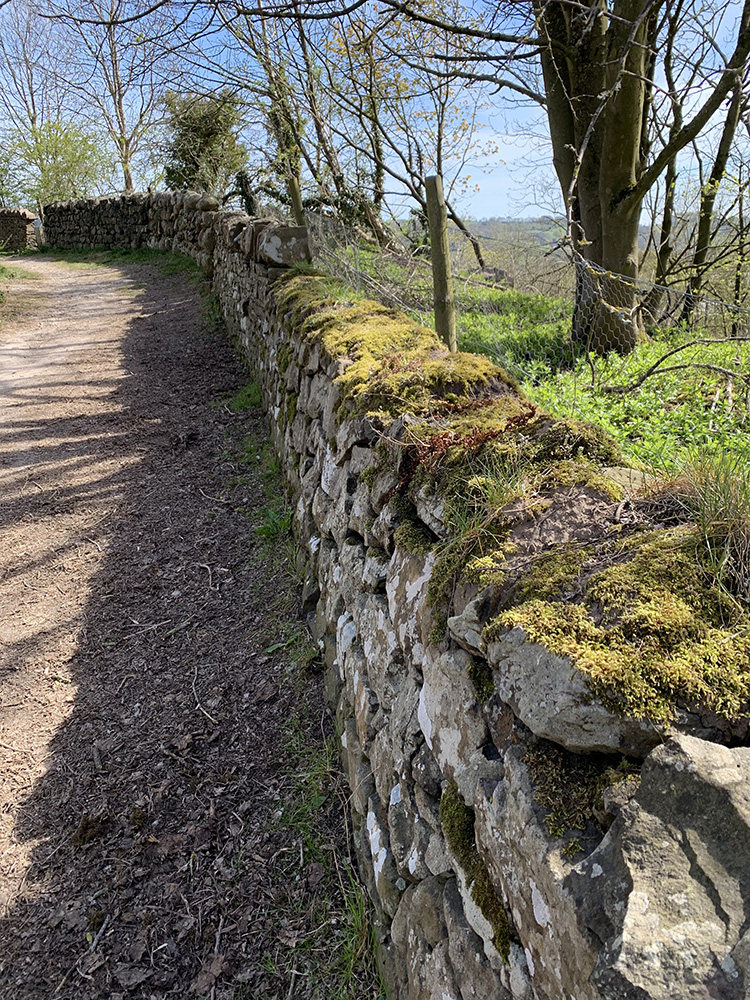
Thorne continues: “You can raise some industry awareness from viewing platforms, but where we are now will allow us to involve industry partners and get quarry sites to bring pieces of equipment and machines here. We can then have dedicated sessions to show how the machines and their associated technology work. It will be a safe space, relieving some health and safety concerns, but as the NSC is on former quarries, it still looks and feels authentic and should excite people.
“We’re in a Hillhead year. We’d love to have livestream broadcasts from the showground to NSC visiting schoolchildren, so they can see exactly what industry attendees are seeing.”
Russell adds: “At the NSC, we will have mobile plant simulators. You’ll be able to have a go at driving an articulated dump truck and learning how plant operators learn. The initial part of this project gives us the space to do that, virtually from day one.”
Building on a 30-year legacy
Ian Thomas, the founder and director of the National Stone Centre, is enthused about how the NSC-IQ merger can build on the NSC’s proud first three decades.
“The aim of the NSC is to be a Centre of Excellence at national, regional and local scales, in all aspects relating to learning about stone and allied matters in the United Kingdom. The IQ aims to advance the science and practice of quarrying internationally in the interests of the public at large. By merging each organisation, one can support the other in delivering on its respective ambitions.
“This is very much about building upon the 30-year legacy of the NSC. It’s about securing a bright and impactful future for the organisation, bringing lasting benefits in personal development, awareness-raising, memorable experiences, and local revenue growth. Plus, with support from the extractives sector, the NSC will move into a new era of success, driving forward the vision of its founders. I’m personally delighted that the Institute of Quarrying is now able to call the NSC its permanent home.”
Local approach key to making a stone-based dream reality
Gabriel Babenko was “delighted” when his team at Wirksworth-based Babenko Associates had their hand-drawn vision for a revamped NSC chosen by the IQ board and NSC trustees.
The stunning renderings of how a newly merged NSC could look will be used by the newly merged NSC and IQ as part of its wide-ranging industry, public and local authority consultations over the coming months. The NSC-IQ is looking to secure funding and planning approval to deliver a cutting-edge industry centre of excellence, with a state-of-the-art exhibition space at its heart.

“We all live within a few hundred metres of the NSC. I measured it on Google Maps, and my house is just under 500 metres away,” said Gabriel. “Babenko Associates is a multi-disciplinary team of architects and engineers, and we’ve been established for six years. From speaking to our clients [NSC-IQ], I understand that they are very keen to make this a very local project.
“I use the National Stone Centre café, and I’ve visited the Centre many times with my children in the 12 years we’ve lived in Wirksworth. We have often sat eating ice creams on the café steps, and the kids love to go gem panning.
“I like to get involved in the local community. I used to be on the board of the local community-owned swimming pool, and I’m on the board of the local music centre for kids.”
Gabriel says that the Babenko Associates’ team have put a lot of thought and time into developing the concept design ideas and drawings for the new NSC. “If the vision is realised, it will be a building that we will be extremely proud of, particularly as the site and its setting is such a special place for us.”
Peak District Mining Museum exploring opportunity to relocate to NSC
A popular museum detailing the story of the Derbyshire mining and quarrying industry is exploring opportunities to relocate its valuable historical collection to the NSC.
The opportunity for the Peak District Mining Museum to move to a new home has arisen following the 2021 merger of the NSC with the Institute of Quarrying (IQ).
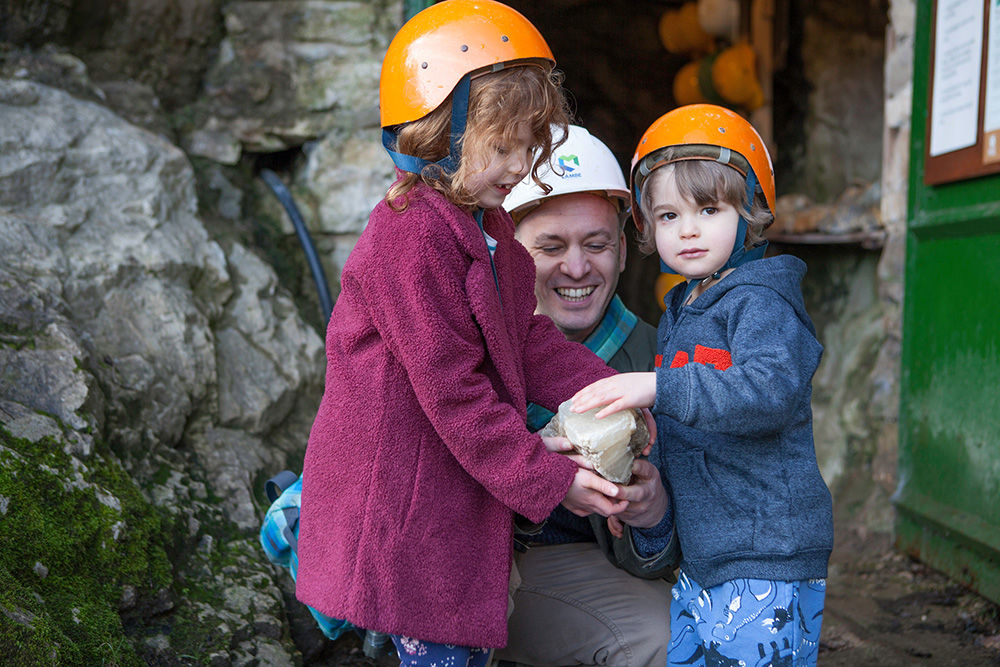
Viv Russell, IQ’s chair, said: “Derbyshire has a long history of quarrying and mining, which has shaped the area’s natural environment that many people enjoy today. When we announced the merger of the IQ and NSC last summer and outlined our plans to redevelop the NSC, it got us noticed by the directors of the Peak District Mining Museum. They approached us for further exploratory conversations about a possible move. It’s still early days, but there’s a real energy and enthusiasm for this to work.”
Clare Herbert, museum manager at the Peak District Mining Museum, said: “We are quite literally just down the road from the National Stone Centre, so a move to the IQ’s proposed ‘centre of excellence’ for quarrying and mineral products would be a perfect fit for us. It would also enable us to realise the ambition we have for the museum and collection whilst remaining embedded in the Derbyshire mining communities from which we draw our inspiration.”

